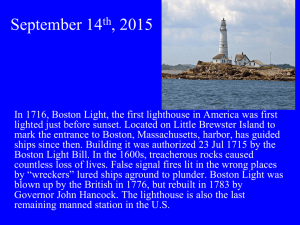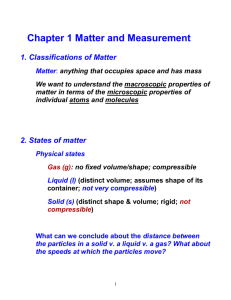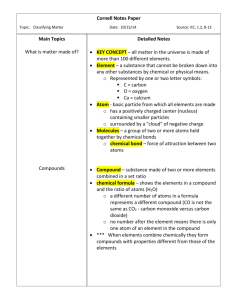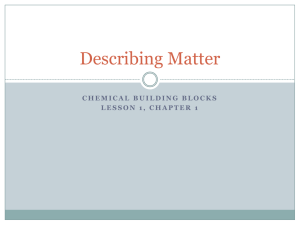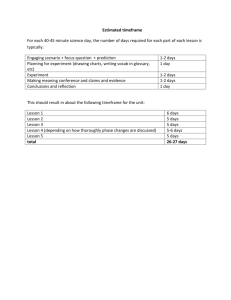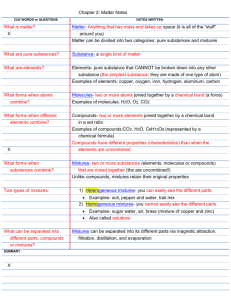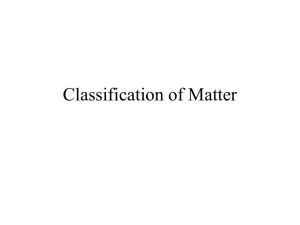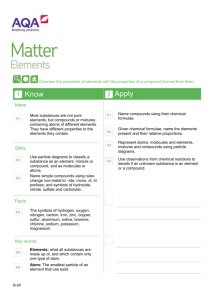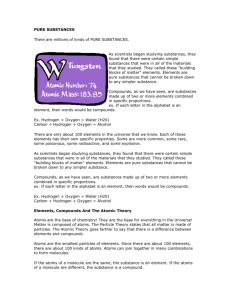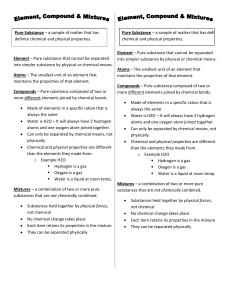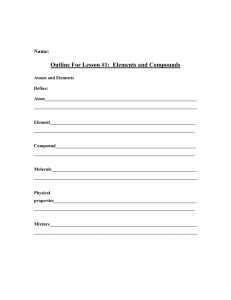Pure Substances, Molecules, elements, compounds, mixtures
advertisement
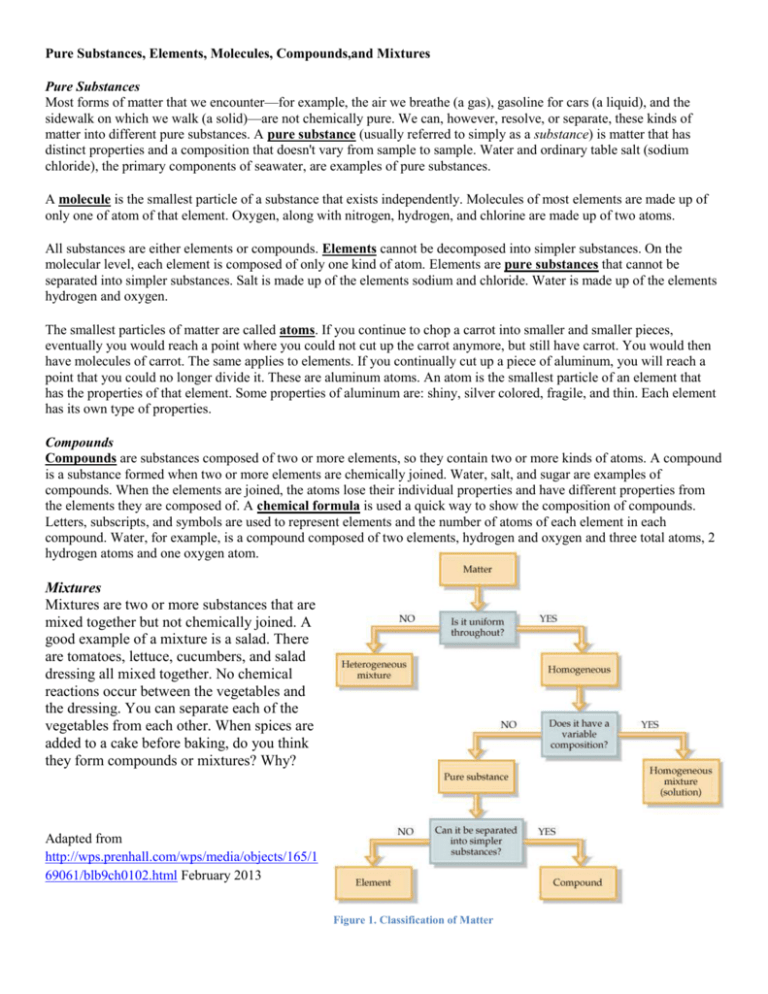
Pure Substances, Elements, Molecules, Compounds,and Mixtures Pure Substances Most forms of matter that we encounter—for example, the air we breathe (a gas), gasoline for cars (a liquid), and the sidewalk on which we walk (a solid)—are not chemically pure. We can, however, resolve, or separate, these kinds of matter into different pure substances. A pure substance (usually referred to simply as a substance) is matter that has distinct properties and a composition that doesn't vary from sample to sample. Water and ordinary table salt (sodium chloride), the primary components of seawater, are examples of pure substances. A molecule is the smallest particle of a substance that exists independently. Molecules of most elements are made up of only one of atom of that element. Oxygen, along with nitrogen, hydrogen, and chlorine are made up of two atoms. All substances are either elements or compounds. Elements cannot be decomposed into simpler substances. On the molecular level, each element is composed of only one kind of atom. Elements are pure substances that cannot be separated into simpler substances. Salt is made up of the elements sodium and chloride. Water is made up of the elements hydrogen and oxygen. The smallest particles of matter are called atoms. If you continue to chop a carrot into smaller and smaller pieces, eventually you would reach a point where you could not cut up the carrot anymore, but still have carrot. You would then have molecules of carrot. The same applies to elements. If you continually cut up a piece of aluminum, you will reach a point that you could no longer divide it. These are aluminum atoms. An atom is the smallest particle of an element that has the properties of that element. Some properties of aluminum are: shiny, silver colored, fragile, and thin. Each element has its own type of properties. Compounds Compounds are substances composed of two or more elements, so they contain two or more kinds of atoms. A compound is a substance formed when two or more elements are chemically joined. Water, salt, and sugar are examples of compounds. When the elements are joined, the atoms lose their individual properties and have different properties from the elements they are composed of. A chemical formula is used a quick way to show the composition of compounds. Letters, subscripts, and symbols are used to represent elements and the number of atoms of each element in each compound. Water, for example, is a compound composed of two elements, hydrogen and oxygen and three total atoms, 2 hydrogen atoms and one oxygen atom. Mixtures Mixtures are two or more substances that are mixed together but not chemically joined. A good example of a mixture is a salad. There are tomatoes, lettuce, cucumbers, and salad dressing all mixed together. No chemical reactions occur between the vegetables and the dressing. You can separate each of the vegetables from each other. When spices are added to a cake before baking, do you think they form compounds or mixtures? Why? Adapted from http://wps.prenhall.com/wps/media/objects/165/1 69061/blb9ch0102.html February 2013 Figure 1. Classification of Matter Atoms, Compounds, and Chemical Formulas 1. Use the reading and flowchart to help you classify the following pictures. 2. First classify the following as a mixture or pure substance 3. Then, classify each box as a mixture or pure substance of the following: atom, molecule, or compound. a. b c d a. b. c. d. e f g h e. f. g. h. i j k l i. j. k. l. How many elements are present? How many atoms of each element? 4. Fill in the following chart. Chemical Formula H2O CO2 CH4 HCl Mg(OH)2 How many total atoms are there?

